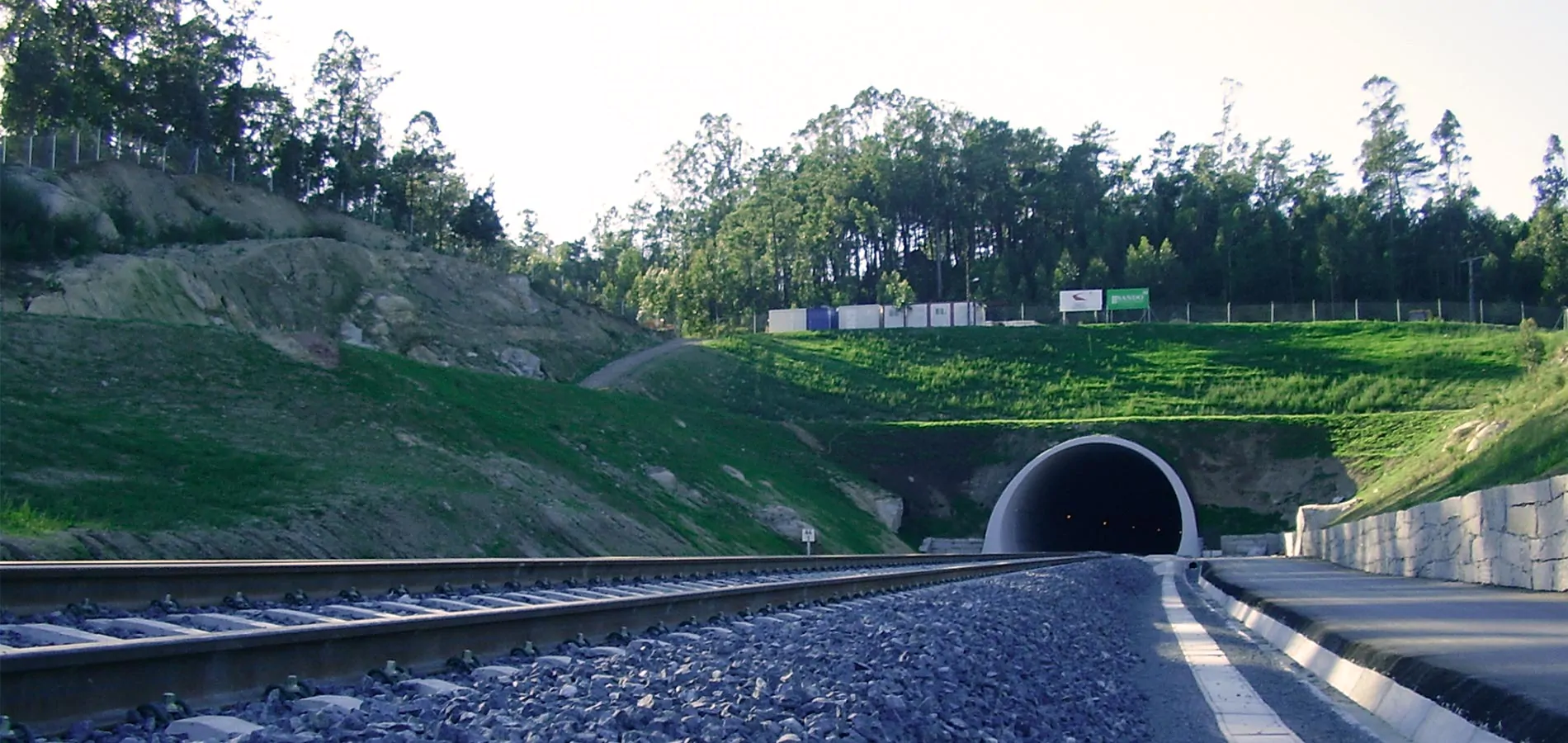In general, land transport infrastructures require specific unique structures, such as tunnels, viaducts, bridges, overpasses, and underpasses, to overcome geographical obstacles along their route or to allow safe intersections and connections between the different infrastructures.
Tunnels are underground constructions artificially opened to establish a communication route between two external points through a mountain, under a river, even seas and oceans, or any other obstacle.
Depending on the use for which the tunnel is built, it will have a different section. Thus, road and rail tunnels have large cross-sections, allowing continuity of the track layout without reducing the standard cross-section. In contrast, the cross-sections of tunnels for hydraulic or fluid transport works are usually much smaller.
Tunnel construction has evolved dramatically throughout history thanks to technological innovation. However, traditional construction methods are still in use and have remained virtually unchanged since the construction of the first tunnel in the 6th century BC.
It could be said that tunnelling is the underground excavation of unknown and unpredictable terrain without the system collapsing.
The most commonly used techniques when excavating tunnels are the Belgian method or classic Madrid method, which is a traditional way of excavating a tunnel gallery followed by the formwork from top to bottom of the excavated section; the new Austrian method or sequential methodwhich takes advantage of the resistance of the ground to support the structure; the use of tunnel boring machines; or drilling and blasting, which is the method used if the tunnel route runs through rocks.
Over the last fifty years, Sando Construcción has excavated tunnels using different techniques and has achieved international records in tunnel construction, such as tunnel boring machines to build high-speed railway tunnels.
Tunnel construction involves a complex methodology. Before excavating the tunnel, it is essential to have a detailed knowledge of the ground on which it will be built An exhaustive prior investigation must be carried out at the geological level to know the type of materials that make up the subsoil and at the geotechnical level to see how these materials will behave when handling them and carrying out the excavation This will be necessary to know the feasibility and scope of the project.
In addition to an adequate knowledge of the terrain and its characteristics, other fundamental factors must be taken into account, such as the presence of the water table, as this will condition the choice of excavation method. When digging a tunnel, the forces of nature are being challenged. Therefore, it is also imperative to know in advance the length and dimensions of the infrastructure to be built to choose the method of execution and the necessary and appropriate safety elements.
Although some tunnelling methods have remained virtually unchanged in recent years, tunnelling companies such as Sando have introduced improvements in tunnelling machines, such as tunnel boring machines, rock drills, hydraulic hammers or drills, which have generally increased tunnelling efficiency. Thanks to technological and innovative developments, these machines have made excavation actions impossible before, adding improvements such as sensors that let you know whether you are digging inside or outside the defined section.
Bridges, viaducts, overpasses, underpasses and large structures, in general, are the unique elements that form part of transport infrastructures to overcome many obstacles along their route. As with any element specifically designed to solve a problem, these large structures are often technically complex and require advanced technologies and innovative ideas to meet and overcome the technical challenges posed by their construction.
Depending on the materials used in their construction, these structures can be reinforced concrete, prestressed concrete, metal or mixed.
Reinforced or post-tensioned concrete structures are usually built entirely on-site. In contrast, prestressed concrete, steel or composite structures are partially built in workshops or precasting plants, with the beams and other precast parts transported to the site for assembly.
Introducing prefabricated elements in the construction of large structures allows a certain degree of industrialisation in the civil works construction sector, enabling cost and time reductions.
Once the underground construction has been completed, an ongoing phase begins: infrastructure conservation. In this sense, Conacon Sando develops its activity to achieve efficient maintenance that allows predictive maintenance of tunnels throughout their useful life—experienced in inspection and execution of repair works of road structures, highlighting the viaducts, subways and overpasses of the different road sectors that we maintain.
In road tunnels, the regulations are stringent, where lighting installations, fire extinguishing, etc., are essential for road safety. Through the Ministry of Transport, which is investing in bringing all tunnels into line with Royal Decree 635/2006 of 26 May, Conacon Sando is developing several projects, such as the tunnels of La Cerradura, Despeñaperros, Cantera, La Miel and Santa Lucía Province of Jaén..

tunnels and mobility structures
We open roads so that the traffic never stops.
tunnels and mobility structures
We implement technically challenging projects that enable connectivity between unimaginable spaces.
To ensure connectivity, we build underground constructions in unpredictable terrain that overcome significant obstacles, such as mountains or rivers up to ocean areas, with Sando Construcción as a benchmark We use everything from tunnel boring machines, hydraulic hammers and drills to state-of-the-art tools and tailor-made innovative solutions. We rely on Conacon Sando as a reference brand for subsequent preservation.